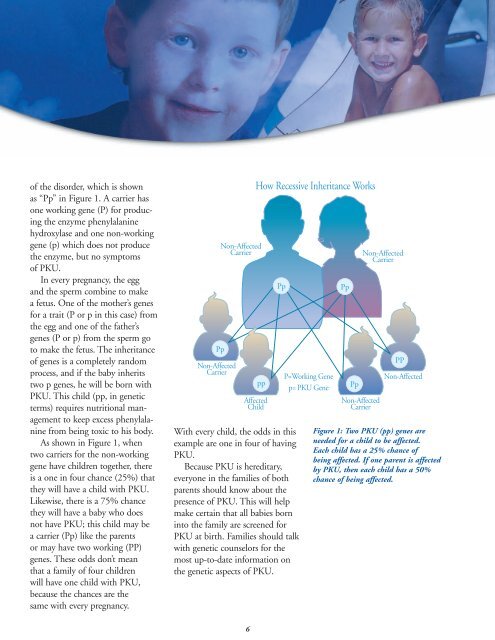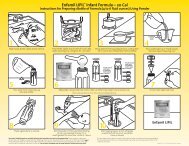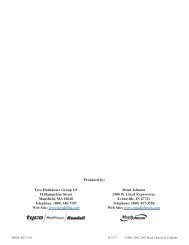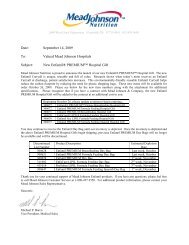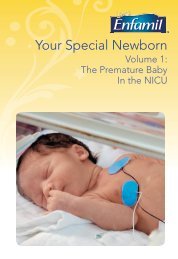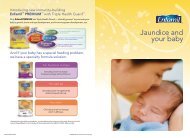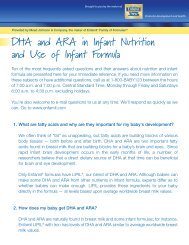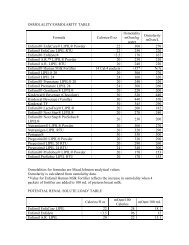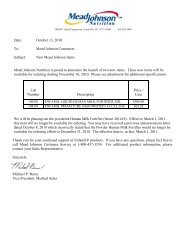Guide to PKU - Mead Johnson Nutrition
Guide to PKU - Mead Johnson Nutrition
Guide to PKU - Mead Johnson Nutrition
Create successful ePaper yourself
Turn your PDF publications into a flip-book with our unique Google optimized e-Paper software.
of the disorder, which is shownas “Pp” in Figure 1. A carrier hasone working gene (P) for producingthe enzyme phenylalaninehydroxylase and one non-workinggene (p) which does not producethe enzyme, but no symp<strong>to</strong>msof <strong>PKU</strong>.In every pregnancy, the eggand the sperm combine <strong>to</strong> makea fetus. One of the mother’s genesfor a trait (P or p in this case) fromthe egg and one of the father’sgenes (P or p) from the sperm go<strong>to</strong> make the fetus. The inheritanceof genes is a completely randomprocess, and if the baby inheritstwo p genes, he will be born with<strong>PKU</strong>. This child (pp, in geneticterms) requires nutritional management<strong>to</strong> keep excess phenylalaninefrom being <strong>to</strong>xic <strong>to</strong> his body.As shown in Figure 1, whentwo carriers for the non-workinggene have children <strong>to</strong>gether, thereis a one in four chance (25%) thatthey will have a child with <strong>PKU</strong>.Likewise, there is a 75% chancethey will have a baby who doesnot have <strong>PKU</strong>; this child may bea carrier (Pp) like the parentsor may have two working (PP)genes. These odds don’t meanthat a family of four childrenwill have one child with <strong>PKU</strong>,because the chances are thesame with every pregnancy.PpNon-AffectedCarrierNon-AffectedCarrierWith every child, the odds in thisexample are one in four of having<strong>PKU</strong>.Because <strong>PKU</strong> is hereditary,everyone in the families of bothparents should know about thepresence of <strong>PKU</strong>. This will helpmake certain that all babies bornin<strong>to</strong> the family are screened for<strong>PKU</strong> at birth. Families should talkwith genetic counselors for themost up-<strong>to</strong>-date information onthe genetic aspects of <strong>PKU</strong>.How Recessive Inheritance WorksppAffectedChildPpP=Working Genep= <strong>PKU</strong> GenePpPpNon-AffectedCarrierNon-AffectedCarrierPPNon-AffectedFigure 1: Two <strong>PKU</strong> (pp) genes areneeded for a child <strong>to</strong> be affected.Each child has a 25% chance ofbeing affected. If one parent is affectedby <strong>PKU</strong>, then each child has a 50%chance of being affected.6


